
Designing to Reduce Failures
Electronic systems have the unique challenge of managing power dissipated as heat, a phenomenon occurring when current flows through a resistance. Without a suitable thermal management design, component temperatures can rise to levels that cause failure. The rate of failure increases as the operating temperatures increase. A general rule of thumb is that with every 10 degrees Celsius reduction in temperature, the failure rate is halved. Solving thermal management problems upfront in the design phase creates a more reliable product as well as prevents expensive changes later on.
Design Considerations
To ensure that the thermal management design of the chassis, circuit boards and components is effective, there are several key areas that must be paid attention to. These include:
- The magnitudes of the heat dissipation of the electronic components
- The power density of the heat dissipated from the electronic components
- Convection and conduction thermal flow paths
- Areas of thermal flow path restrictions
- The chassis method of cooling
| Thermal Mapping in Solidworks Simulation | Thermal Mapping of Circuit Card in Solidworks Simulation |
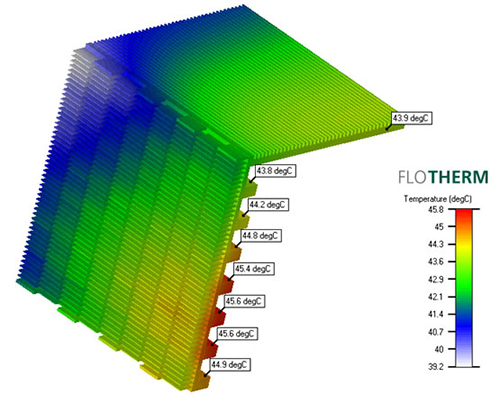
|
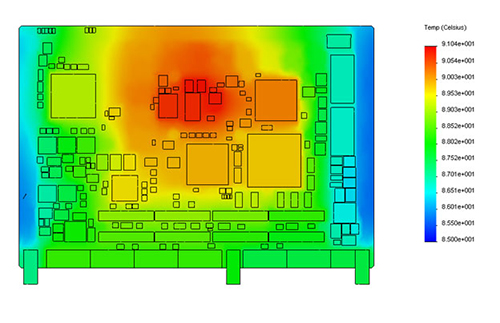
|
Increasingly higher processing speeds have resulted in new systems that exhibit much larger magnitudes of heat dissipation then in previous systems. For example, today’s 6U VPX boards typically dissipate 2 to 4 times the power as compared to VME. It is for this very reason that detailed thermal analysis must be performed to ensure the system performs as it should in what can potentially be harsh environments.
Design Tools
Curtiss-Wright employs state of the art, industry standard Computational Fluid Dynamics (CFD), and thermal mapping tools that provide an enhanced capability for thermal and airflow modeling and simulation. We use industry leading thermal analysis tools including:
- MacroFlow Flow Network Modeling for chassis, sizing and first order analysis
- FloTHERM for performing system to device level CFD thermal analysis
- Solidworks Simulation and CFD for device level thermal and flow analysis
- Cambridge Accesense multi-point temperature and airflow test equipment for overall and detailed testing
| Pressure Model in Flowtherm | Air Flow Model in Flowtherm |
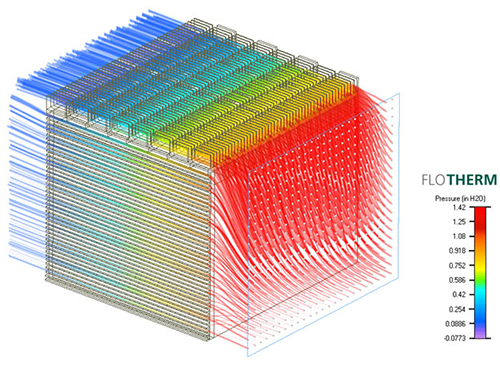
|
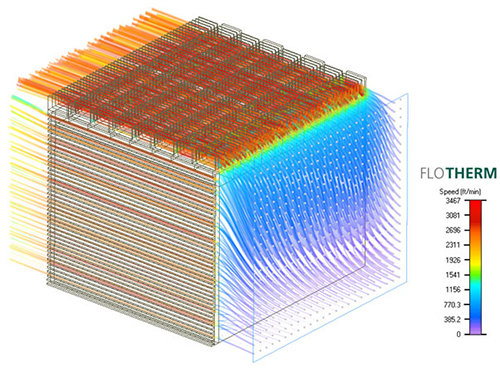
|
Our capabilities range from detailed component package modeling to full system modeling for:
|
|
| Thermal Mapping of Chassis in Flowtherm | Conduction Thermal Analysis in Solidworks Simulation |
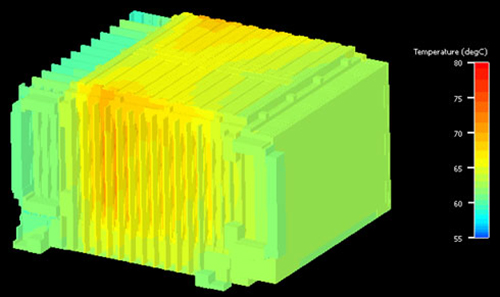
|
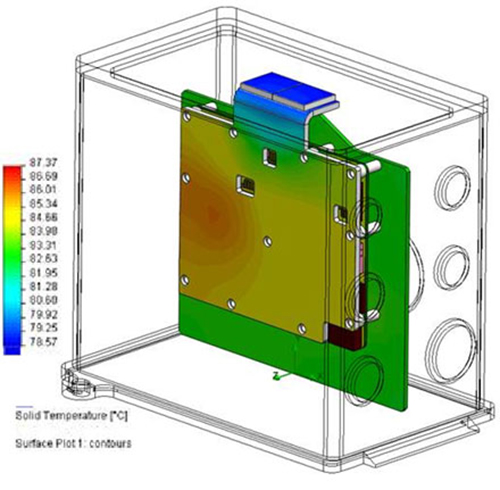
|
Along with Curtiss-Wright capabilities to perform proper design analysis with advanced software, we are able to test the performance of our designs using onsite test equipment. Curtiss-Wright’s test equipment is pertinent to the thermal design which includes temperature cycling chambers, thermal couples for point of contact response, and data acquisition systems to properly model the performance of the equipment. Curtiss-Wright has a long history of thermal innovations, and offers thermal analysis services for our chassis solutions. As we continue to develop our capabilities, exciting new technologies will emerge to improve thermal performance in demanding applications.
Performance and Mounting
The mounting configuration is an important feature in which Curtiss-Wright offers a variety of thermal considerations including: desk top mounting, rack mounting, ATR mounting, and application specific styles. The enclosure styles typically house 2 slots to 21 slots, with the capability to cool from 100W to 2000W using a variety of cooling methods which include natural convection, baseplate conduction, forced-air convection, air-flow-through, and liquid cooling.
| Thermal Loading on Enclosure | Thermal Loading on Card Assembly |
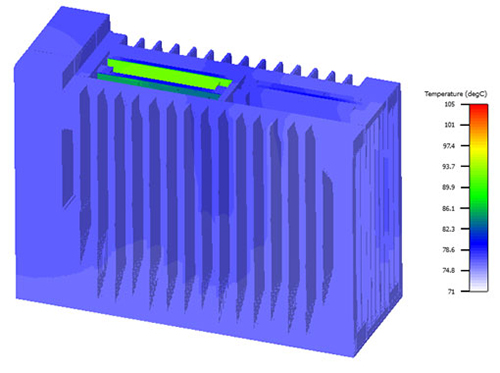
|
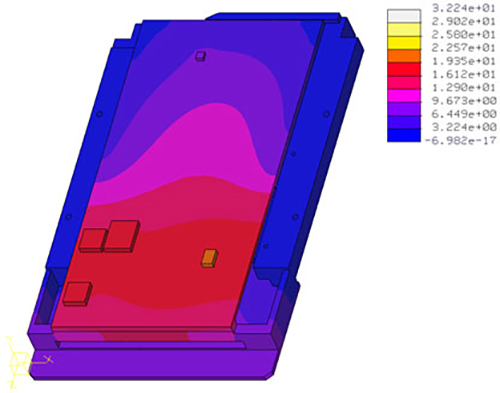
|
Thermal Management in Rugged Computer Systems
This white paper looks at the different cooling techniques available and aims to provide clarity on how to choose the best solution.
Application
The application of this equipment includes anything from demonstration units to hardware and software development platforms to environmental test platforms. Curtiss-Wright also offers rack level solutions that can include multiple chassis design for desktop or rack mounting configurations. Chassis bus structures typically include OpenVPX, VPX-REDI, VME64x, VXS, and CompactPCI as well as hybrid bus structures. When it comes to the design and performance of electronic systems, Curtiss-Wright historically has been looked at as an industry leader in the field. With years of experience and a talented group of engineers, Curtiss-Wright will continue to press forward in providing the most optimized, low cost solution our customers rely on!
